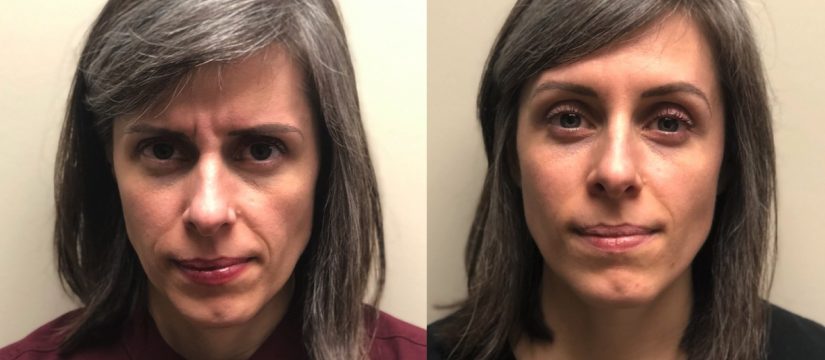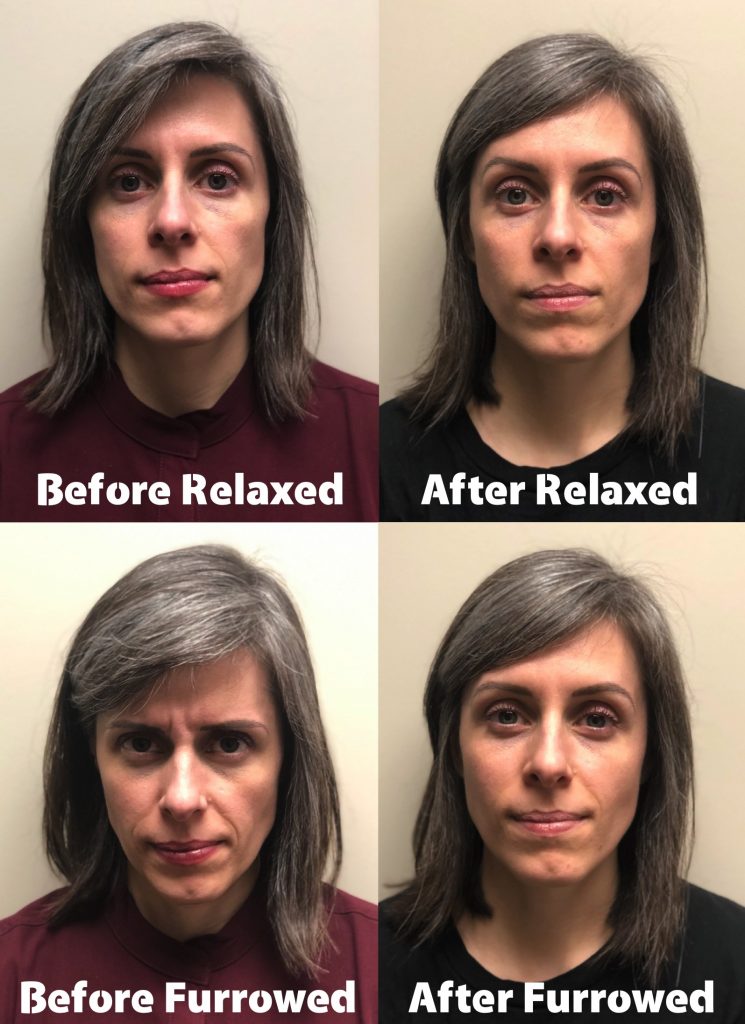
Botox® is now offered at AdVance Dental!
Last year I was trained by the American Academy of Facial Esthetics in how to use Botox® and dermal fillers to minimize (and in some cases remove) certain facial wrinkles. This was an exciting experience and an opportunity to offer new services to my patients. My assistant, office manager, and wife also attended; seen below is my wife getting injections for her frown lines (a.k.a. “glabellar lines” or “elevens”).

The History of Botox®
What is Botox®? Botulinum toxin (known most commonly by the brand name Botox®) is a neurotoxin produced by the bacterium Clostridium botulinum A. This neurotoxin is what causes botulism, a rare but serious (and potentially fatal) disease that can cause weakness or paralysis of many muscles in the body. The recorded history of botulism began in 1735, when the disease was first associated with the consumption of sausage. In 1870, John Muller, a German physician, derived the name botulism from the Latin word for sausage (“botulus”). Clostridium botulinum was first discovered by a Belgian scientist named Emile Pierre van Ermengem following a botulism outbreak in Belgium. By the 1920s, scientists at the University of California, San Francisco, first tried to isolate the botulinum toxin. However, it took 20 years before the botulinum toxin was finally isolated in crystalline form by Dr. Edward Schantz in 1946. In the 1970s, scientists started using botulinum toxin to treat strabismus (crossed eyes). While testing this treatment on monkeys, researchers noticed that botulinum toxin reduced wrinkles in the glabella (the skin between the eyebrows). After botulinum toxin proved successful in the treatment of strabismus, Allergan licensed the treatment and branded it as Botox®. Subsequently, Botox® received FDA approval for a variety of medical and cosmetic uses.
Here are the dates of various FDA approvals for botulinum toxin:
- Strabismus and blepharospasm in 1989
- Cervical dystonia in 2000
- Glabellar lines in 2002
- Axillary hyperhidrosis (excessive sweating) in 2004
- Chronic migraines and upper lip spasticity in 2010
- Urinary incontinence in 2011
- Crow’s feet (lateral canthal lines) in 2013
- Forehead lines in 2017
How does Botox® work?
Botulinum toxin binds to nerve endings of muscles, which prevent the nerve endings from moving the muscles for a period of about 3 months. After this time, the nerves create new end receptors and the effect wears off. In a purified form, and in controlled amounts, botulinum toxin can be used therapeutically to reduce the strength of targeted muscle tissues. Muscles of the face that can cause wrinkles from repeated movements can be injected with botulinum toxin and temporarily weakened/paralyzed. This decreases the extent to which wrinkles on the face can be made, and also gives the skin time to smooth out since the wrinkles are not being formed.
How is Botox® used at AdVance Dental?
The areas typically treated with botulinum toxin (Botox®) for wrinkles are the forehead, between the eyes (glabellar region), around the corners of the eyes (crow’s feet) and around the lips (“smokers lines” or “water bottle lines”). There is no loss of sensory feeling in the muscles. Once the motor nerve endings are interrupted, the muscle cannot contract, causing wrinkles in the skin to smooth. The effects of botulinum toxin (Botox®) last approximately three to four months, at which time the patient will require re-treatment.
Below is before and after pictures of my wife Emily after her glabellar lines were treated for the second time. Note that she is unable to make the “furrowed” brow look that causes the wrinkles in the first place, which makes the “11” lines slightly less noticeable at rest.

Is Botox® safe?
There are some complications that are possible with Botulinum toxin injections, which are reviewed in detail prior to any proposed treatment. But for Botulinum toxin to be truly toxic (and cause botulism), you would need a very high dosage. Botox® is measured in units, and generally comes in vials of 100 units. A patient receiving Botox® for multiple sites on the face may receive 50 to 60 units (example: glabellar lines usually take 20-30 units). A lethal dose of Botulinum toxin would consist of 2,500-3,000 units (25-30 vials)! This far exceeds the amount that anyone would ever receive for esthetic or therapeutic purposes in one sitting.
I’ll be posting about dermal fillers and other uses for botulinum toxin in the future – check out my blog page for more posts about esthetic services and many other topics.
Check out our YouTube Channel for educational videos about our practice, dentistry, and more!
Read more about botox from the AAFE’s website here.
References:
https://www.verywellhealth.com/how-botox-came-to-be-1124145
https://en.wikipedia.org/wiki/%C3%89mile_van_Ermengem
Camargo, CP, et al. Botulinum toxin for facial wrinkles (Protocol). Cochrane Library. 2014.
Dorizas, A, Krueger, N, Sadick, NS. Aesthetic Uses of the Botulinum Toxin. Dermatologic Clinics. 2014; 32(1):23-36.
http://www.health.gov.on.ca/en/public/publications/disease/botulism.aspx
https://en.wiktionary.org/wiki/botulus
https://www.allergan.com/news/news/thomson-reuters/fda-approves-botox-cosmetic-onabotulinumtoxina-for
